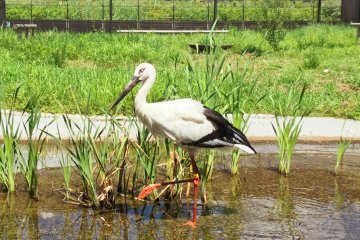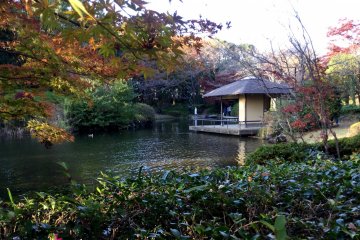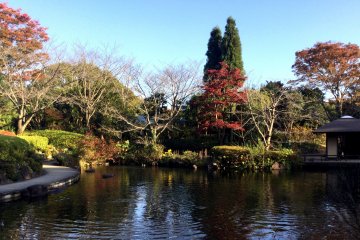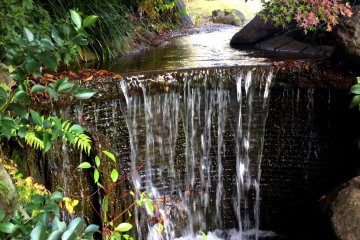Kashiwa City on the Joban Line, easily accessible from Tokyo, is a suburban town from which many people commute into the big city. However, as a visitor or a resident looking for natural beauty, go the other way, out to this Kashiwa City to see some natural beauty and spacious parks. Within an easy walk of Kashiwanoha Campus, a futuristic city of tall towers and the Kashiwa campus of Tokyo University is Kashiwanoha Park.
The 45 hectare site surrounding a lake gets its name from the daimyo oak, the designated city tree of Kashiwa City. This oak tree with its large and deeply lobed leaves is the symbol of the city, and lends its name to the city, too. For horticulture enthusiasts, this is a good place to learn about Japan’s trees. The park not only has these stately oaks, but also dozens of mature native and Asian trees. Tree hunters can spot these specimens throughout the park with the aid of a visual guide map. The park also has a large rose garden with international and Japanese varieties that bloom from spring to autumn.
The park has lots to see and do for families, too. On the edge of the central lake is a rest house that provides a large barbecue space. This facility available by reservation provides barbecue equipment, or alternatively, come empty-handed and you can order everything you need to feed your party. If you bring your picnic lunch, another option is to borrow swan boats to paddle about the lake.
Perhaps Kashiwanoha Park’s best treasure is Shohakutei Tea House. This tea house in the sukiya style is nestled in a lovely strolling garden. The tea house is the venue for the tea ceremony in the morning. If you’d prefer a more casual tea experience, go in the afternoon when the tea house serves matcha and sweets.
Any time of year is a good time to go to the park. The park has a variety of cherry trees in spring, and ginkgo and maple trees in autumn, quickly followed by winter blooming sazanka camellias.











